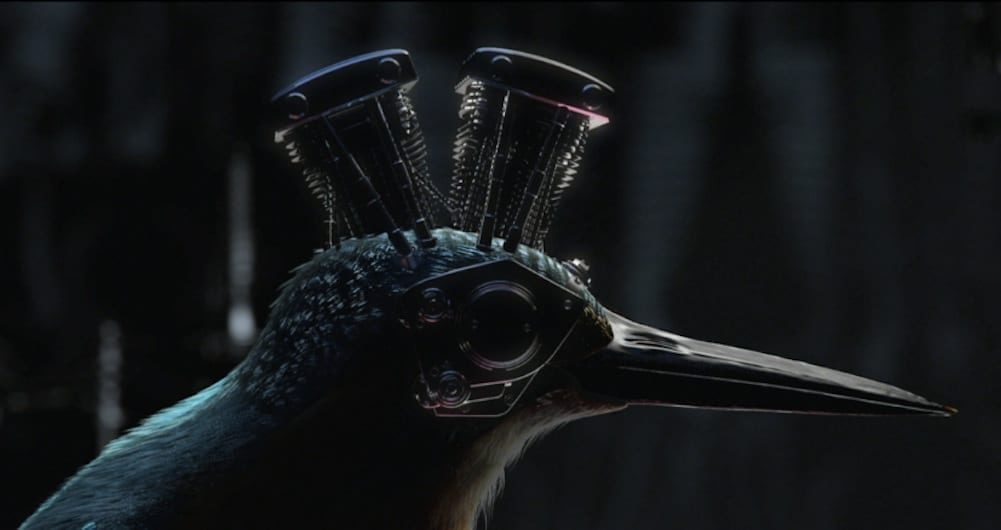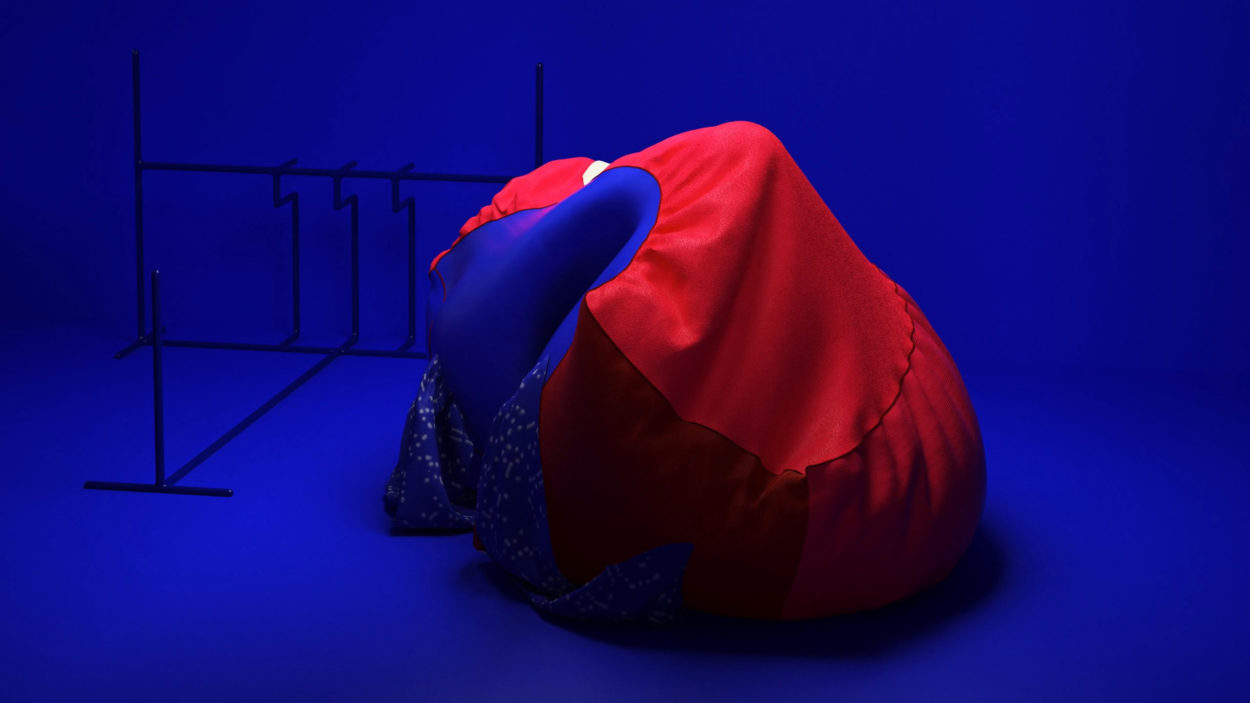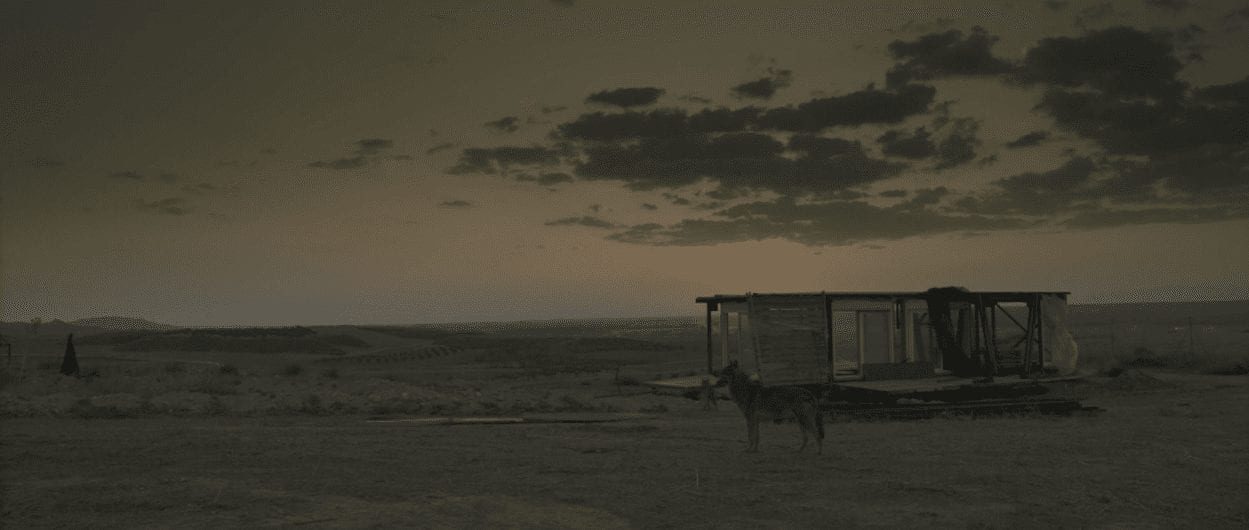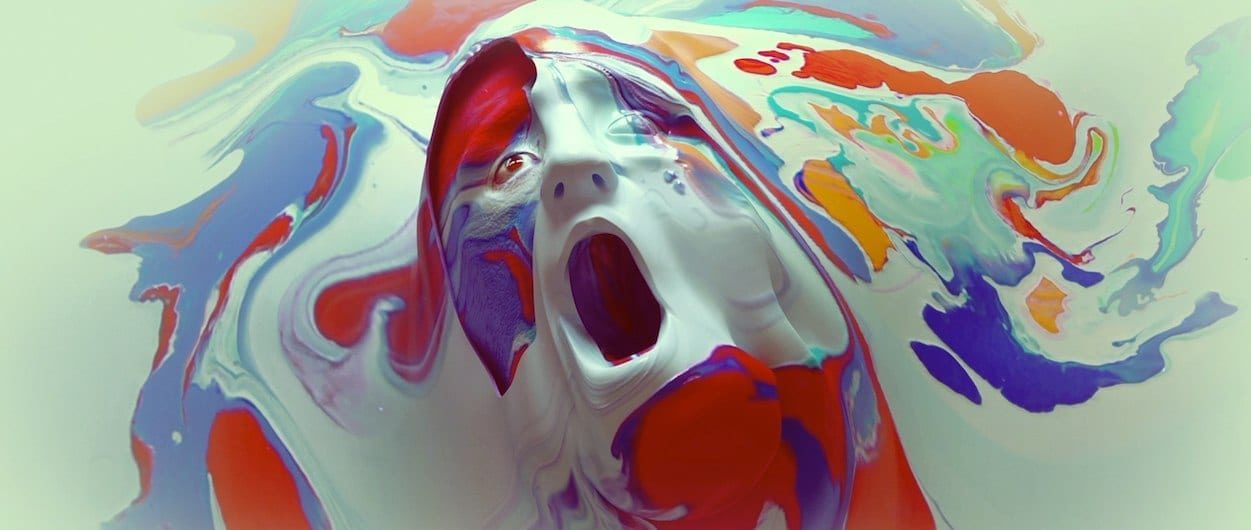To mark the launch of the collection, River Island decided to push boundaries by taking the aesthetic world imagined in film by Dvein and transferring it into a 360° 3D environment for Google Cardboard. The low-tech, easy access Cardboard headset can be downloaded online and will be distributed to River Island customers who buy the collection online or in-store. Using the device viewers can turn the free to download VirtualRI app into an immersive VR experience using their smartphones.
The project launched Monday at London Fashion Week and was elaborated on via a Google Hangout yesterday featuring Tech Editors from Wired and The Telegraph, River Island’s Josie Roscop, designer Jean Pierre Braganza and White Lodge Executive Producer, Stephen Whelan.
We talk with Stephen about the project as well as the digital artists Dvein, the collective behind the 3D realisation of the design and Daniel Cheetham, Head of Interactive at Happy Finish.
Dvein, your film is based on the key design motifs from Jean-Pierre Braganza’s Design Forum collection – a vibrant Kingfisher and chrome motorcycle components. How did you go about building out your interpretation of the designs into a 3D world?
Dvein: What caught our attention the most when we first saw Jean-Pierre’s prints was the contrast between the lively colouring on the Kingfisher and the cold surfaces of the metallic textures of the engines. It was something we really hadn’t ever seen before and it felt both amazingly unexpected and really surprising. We thought there was a lot of potential with the design aesthetic to make a very striking video. It was also interesting to think “what sort of world and environment would these prints live within and represent? What would it be like to go inside that world and those mechanisms to the birds who inhabit it?”. So our starting point was about generating that world, and we thought it would be interesting that it was seen as a discovery trip.
We’ve played a lot with the duplicity of the motorcycle engine parts in contrast with the organic living elements to create a journey in which we the viewer can discover not only the spaces and environments but also who inhabits it: the kingfishers, and what we’ve named “The Kingfisher Queen”, indicative of the attitude of the Jean-Pierre Braganza woman. She – helps give this world a feminine and sensual touch .
Creating a VR experience is not your normal platform – let’s face it, it’s still a rare medium to use. What were the considerations you had to take into account which were different from your more frequent linear animated film work?
Dvein: The VR experience was actually developed by Happy Finish, and it was the first time in which one of our film was turned into an interactive experience. We coordinated with them so that they could turn our 3D materials into the ones needed to create the app, and they conceptualized it in the same direction that we did: the user gets to have their own discovery trip through the world we developed by being one of the birds but instead of being lead by us, they get to choose the way themselves. It’s one of our videos turned into a videogame and well, that is pretty amazing!
Stephen, we’ve just listened to the Google hangout live broadcast about the merging of Fashion, Film and Tech industries and how they drive and inspire each other. Josie Roscop from River Island explained that the production was a real first for a fashion brand. What was the initial brief they gave to you and how did you evolve it?
Stephen Whelan (White Lodge): We’re incredibly fortunate to have such a progressive creative partnership with River Island and have been working with them on the Design Forum Collection campaigns for several years. Josie and her team have an incredibly forward-thinking approach to engaging consumers in a meaningful way with the River Island brand so we wanted to deliver an unusual and innovative project with them for the Jean-Pierre Braganza collection.
Early on Josie and Jean-Pierre made the call that they wanted to work within a digital animation aesthetic for the film. I’d just been introduced to the team at Happy Finish and their Interactive Executive Producer, Daniel Cheetham. He’d run a demo at White Lodge of a few VR and AR projects they had in R&D and when I saw the Google Cardboard it was a lightbulb moment. What if we took the animated elements from Dvein and created a 360 degree VR fashion film?
Thankfully Daniel and his insanely hardworking tech team were able to form a seamless bridge between our video production process and the execution of the digital experience through the Unity game engine. It was the first time we’d put a workflow like this together so it was a steep learning curve all round.
I’m hesitant to say it’s the first project of its kind because the internet of ideas is such a vast space that I’m sure the collective mind was already starting to shift in that direction. But it’s definitely the first use of this technology by a fashion brand to create a seamless video, interactive and ecommerce experience.
What was the key benefit of developing this VR experience – is it the novelty factor or is their commercial potential behind it?
We really didn’t want to go down the road of Technology for Technology’s sake. The creative idea was to develop and extend the world Dvein were building and the tech and Google Cardboard elements were always treated as tools to meet that creative need. It wasn’t about creating a talking point for the technology alone – ultimately the quality of the VR experience had to match and evolve out of the film. Daniel at Happy Finish is a firm believer that tech should help solve creative problems rather than be considered a platform in and of itself. We don’t start by thinking “it’s on TV, how do we fit the TV format”, we start by thinking “we have a potentially huge audience interested in this platform, how to we create engaging content that will give them a meaningful experience with the brand”.
Of course we are really excited about the commercial potential for these sorts of projects – the Virtual RI app includes a direct link through to the ecommerce area of River Island’s website so acts as a seamless driver to purchase the collection at the precise point where the consumer is most emotionally engaged with the brand. Other brands already allow you buy direct from the catwalk. River Island has pioneered a way to let their consumers buy directly from a virtual world. Much more exciting I think!
Daniel, can you talk us (in laymen’s terms!) how you went about collaborating with Dvein on this one? How did you take their film content and turn it into a VR world?!
Daniel Cheetham (Happy Finish): We needed to work very closely with Dvein. Our production timelines were closely aligned form the very beginning of the project. As they created assets for the film our CG artists and developers received those and set about either translating them into assets that would work in a 360° VR experience or alternatively recreating them in the context of the platform we were targeting.
The key challenge is that our Cardboard app uses real-time graphics rendering on mobile devices, which limits the size (in terms of poly and data) of the assets that are rendered on screen at any one time. Dvein were great throughout the process, through the many creative and technical conversations we had they went out of their way to help us… we look forward to working in a similar way on many more upcoming projects.
Happy Finish has spent a lot of time in R&D exploring how to push the limits of current mobile devices like the iPhone6 and 2015 Android devices. This app is a great example of how much these devices can handle in terms of rendering on screen at any one time. We are very satisfied with what we’ve achieved, but continue to push the limits.
More info on the project can be found at White Lodge:
https://www.whitelodge.tv/case-studies/interactive-fashion/
















